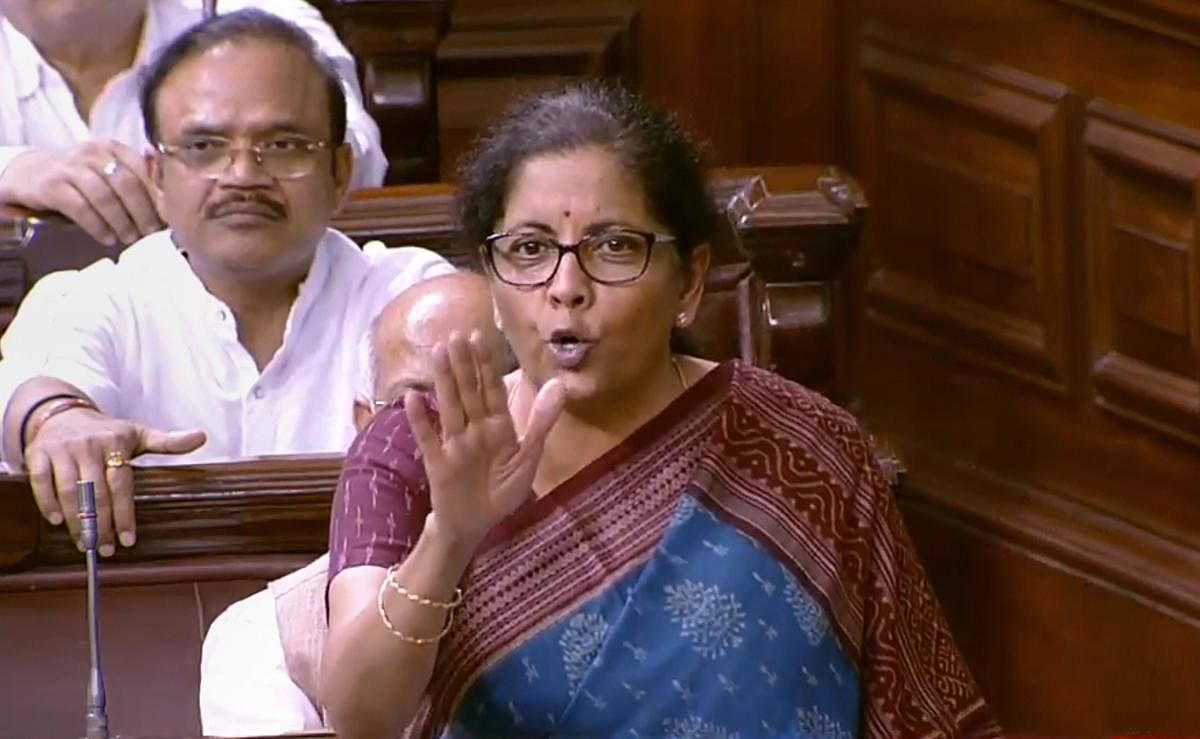On August 30, Finance Minister Nirmala Sitaraman announced the consolidation of 10 public sector banks (PSBs) into four large ones. The background of the announcement is the current full-blown economic crisis and a brewing crisis in the financial sector.
Over the last several years, PSBs have been struggling to deal with mounting Non-Performing Assets (NPAs). Now, PSBs are struggling at the core of their business, which is credit offtake. On NPAs, the government claims that with the Insolvency & Bankruptcy Code (IBC), it has contained the issue since NPAs have gone down significantly. Figures of NPAs as of March 2019 as against 2018 are being quoted to support this claim.
READ: The ‘Big Bank’ theory
In terms of IBC, 23 big corporate NPA accounts were referred to the National Company Law Tribunal (NLCT), with a total claim amount of Rs 1,37,745 crore, as against which Rs 63,982 crore has been recovered, sacrificing Rs 73,763 crore, or 51.63% of what was due. The data is as of December 2018 and covers only those companies which faced total claims of more than Rs 500 crore. The numbers are reported in an analysis of two years of IBC titled “Whose Loss, Whose Gain?” published by the Centre for Financial Accountability, New Delhi.
The data shows what we have on hand is nothing short of an amnesty scheme for big corporates. NPA figures as of 2015 stood at Rs 1,92,809 crore, rose to Rs 6,16,586 crore in 2018, and fell to Rs 5,66,791 crore as of 2019. But the fall in NPA levels has been achieved only with write offs and ‘haircuts’ under one-time settlement schemes devised by banks’ board-driven policies.
In 2019, in one single year, PSU banks reduced NPAs through write offs and compromises amounting to Rs 1,24,296 crore. Whatever explanations may be provided by banks or the finance ministry, from the perspective of the ordinary citizen, this reduction in NPAs is nothing short of accounting jugglery, with banks sacrificing in favour of big corporates.
As revealed by the government, the amount involved in cases pending in Debt Recovery Tribunals (DRTs) is more than Rs 6 lakh crore. In most DRTs, either the presiding officer or the recovery officer has not been posted, and thus the DRT mechanism has failed. Same is the case with the NCLT, in which some recovery can be made only if banks are prepared for a heavy ‘haircut’. Else, the case ends up in litigation.
Under the garb of consolidation, now the focus of banks will be shifted from recovery, which is the urgent need of the day, to streamlining the merger and its working by addressing issues related to the technology platform, branch rationalisation, manpower integration, etc. As a result, the first casualty will be recovery of NPAs. Consolidation of PSBs will in no way help banks to come out of their crisis.
Today, with the implementation of the Pradhan Mantri Jan Dhan Yojana and other social sector insurance schemes, pension schemes and disbursement of all sorts of subsidies through banks, branches of banks have acquired renewed importance. We need more branches, but consolidation will take us in reverse gear. Banks are likely to close branches wherever there is an overlap. As evidence shows, following the 2017 consolidation, SBI has closed more than 1,000 branches; Bank of Baroda is in the process of closing 500 branches. The new set of mergers will likely lead to another 2,500-3,000 branches being closed. This consolidation is likely to prove counterproductive.
Those banks that are being merged have a long history of about 7-8 decades. They were products of the national movement, the Swadeshi movement or of the linguistic reorganisation of states. Each bank has its unique history, geography and culture, too.
With the mergers, the banks will lose these roots. This is likely to be painful not only for bank staff but also for the customers, who still rely on relationship banking.
In the developed world, demergers are the flavor of the season after the global financial crisis of 2008, and the realisation that institutions c “too big to fail” become systemic threats.
The PSB mergers were neither demanded by bank staff nor by customers nor shareholders but is being driven by the government, which all the while talks about the autonomy of these banks. This is a great mockery.
This consolidation is neither in the interest of banking nor in the interest of customers nor in the interest of banks’ shareholders. It is being done purely to serve the interests of large corporates who are the root cause of the present crisis in banking.
(The writer is a former director of the Bank of Maharashtra and Joint Secretary, All India Bank Employees Association)
